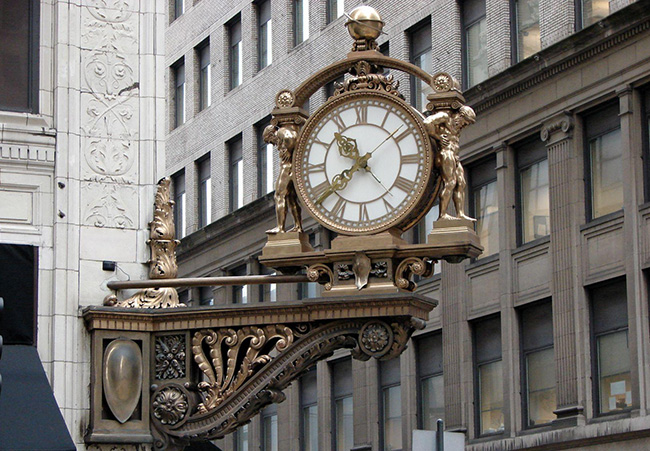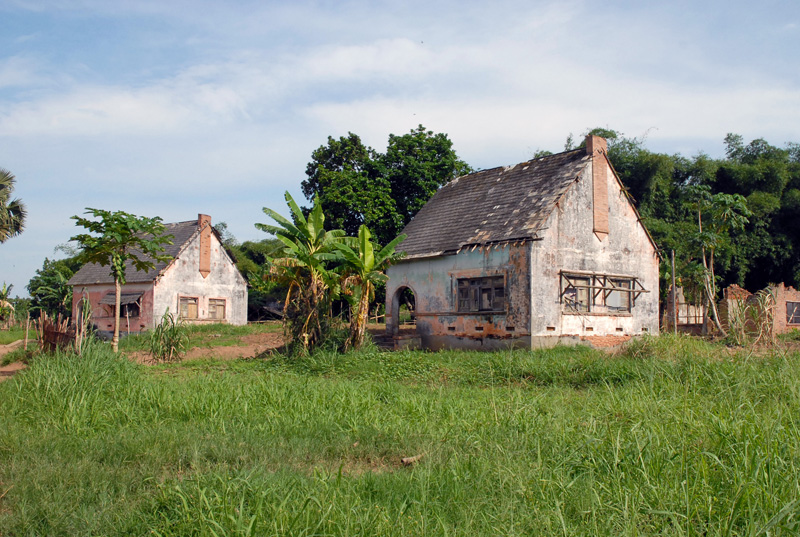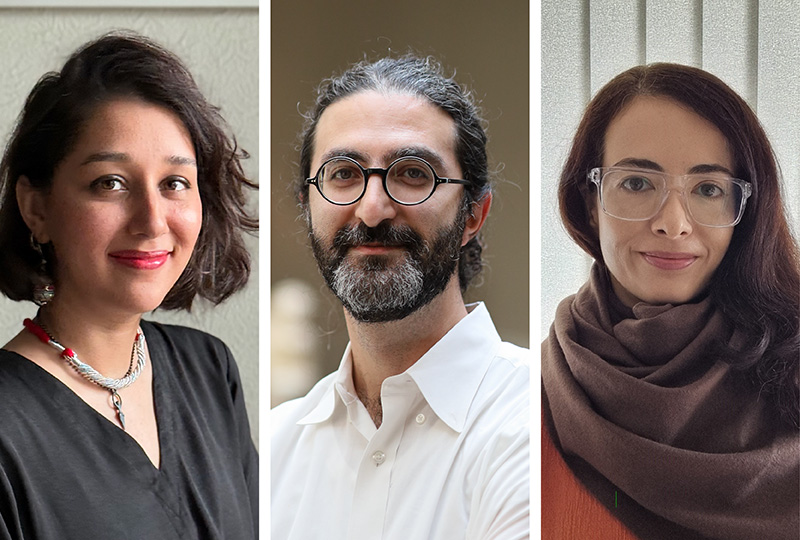-
Membership
Membership
Anyone with an interest in the history of the built environment is welcome to join the Society of Architectural Historians -
Conferences
Conferences
SAH Annual International Conferences bring members together for scholarly exchange and networking -
Publications
Publications
Through print and digital publications, SAH documents the history of the built environment and disseminates scholarship -
Programs
Programs
SAH promotes meaningful engagement with the history of the built environment through its programsMember Programs
-
Jobs & Opportunities
Jobs & Opportunities
SAH provides resources, fellowships, and grants to help further your career and professional life -
Support
Support
We invite you to support the educational mission of SAH by making a gift, becoming a member, or volunteering -
About
About
SAH promotes the study, interpretation, and conservation of the built environment worldwide for the benefit of all
Call for Papers: TAD Journal Vol 9 Issue 2, Innovation
Add to:
Deadline: January 15, 2025
Submissions: https://mc.manuscriptcentral.com/tadjournal
The upcoming issue of TECHNOLOGY | ARCHITECTURE + DESIGN (TAD) welcomes submissions addressing new and original research on architecture, design, and technology. The journal now welcomes research or scholarship for the topic of this call for papers or open topics on a rolling submission basis. We will consider all submissions for this or an upcoming issue.
The focus area for this issue seeks to explore inventive topics from different aspects of the built environment. Innovation captures new ideas, methods, strategies, products, forms, designs, etc. Innovation is the action or process of innovating, introducing, or presenting novelties and modifying what is established by introducing new elements or forms. It is a change introduced to an existing product. Imaginative ideas include improvements that capture how components or processes are modified or configured in designs, systems, or domains, like building materials, data processing, digital fabrication, computation, history and theory of innovation. Innovation is critical to the success of any endeavor, such as an organization, enterprise, field or discipline, or industry. Invention is the primary driver of advancement in the built environment and other sectors, as it provides approaches, resources, and concepts generated and realized, leading to a better and more sustainable built environment. Invention guides all disciplines, and inventive ideas involve various players with diverse incentives.
The current issue seeks submissions that provide thoughtful and rigorous approaches to answer innovation-related questions and experiments. The issue seeks submissions that cover a broad range of topics in architecture. The journal seeks submissions that capture work on inventive renewable technologies and materials, innovations in sustainability, adaptive reuse, history and theories of innovation in the field, sustainable building strategies, systems, smart metering, sensing, monitoring, digital innovations, patents, advanced methods of data sharing, documentation, and interpretation of big data, application of digital twin and new technologies in the built environment to name a few.
Authors may address the following questions, but they can be broader than these areas. How do we approach and manage imaginative ideas? What is the notion of challenging or rethinking the concept of innovation in our discipline? When is it desirable? When can our actions or attitudes of privileging novelty over long-standing practices impact inventive ideas? What technological innovations save energy consumption in the built environment? How have innovations improved building performance, thermal comfort, satisfaction, and energy efficiency? What are the innovative strategies adopted to enhance various aspects of building performance? What are the historical trends of innovation witnessed in the built environment over the last decades? How has it influenced investigations on sustainable built environment, energy efficiency, low-carbon building envelopes, affordable housing, modeling and optimization, post-occupancy evaluation, field measurements, and environmental monitoring of indoor and outdoor thermal environments? How have regulations and policies shaped innovation? What strategies could industry, practice, and academia employ to foster and nurture innovation in the built environment? Are there any lessons we can learn from work on inventive studies? How do we see the future of innovation and its associated risks?
The editors strongly encourage submissions by individual or multiple authors with related work, including those demonstrating contributions from underrepresented groups in the field.
TAD invites original and innovative research from scholars, practitioners, researchers, and students. Contributions to the issue focus area are encouraged, but TAD will consider all papers that meet the TAD mission statement. The journal accepts submissions on a rolling basis, but for consideration in this issue, manuscripts are due before 11:59 pm Eastern Time on January 15, 2025. All manuscripts are double-blind peer-reviewed. Manuscripts must follow the standards detailed in the TAD Author Guide, available at TADjournal.org.
Row White
Lorem ipsum dolor sit amet, consectetur adipiscing elit, sed do eiusmod tempor incididunt ut labore et dolore magna aliqua. Ut enim ad minim veniam, quis nostrud exercitation ullamco laboris nisi ut aliquip ex ea commodo consequat. Duis aute irure dolor in reprehenderit in voluptate velit esse cillum dolore eu fugiat nulla pariatur. Excepteur sint occaecat cupidatat non proident, sunt in culpa qui officia deserunt mollit anim id est laborum.
Row BG Green
Lorem ipsum dolor sit amet, consectetur adipiscing elit, sed do eiusmod tempor incididunt ut labore et dolore magna aliqua. Ut enim ad minim veniam, quis nostrud exercitation ullamco laboris nisi ut aliquip ex ea commodo consequat. Duis aute irure dolor in reprehenderit in voluptate velit esse cillum dolore eu fugiat nulla pariatur. Excepteur sint occaecat cupidatat non proident, sunt in culpa qui officia deserunt mollit anim id est laborum.
Row Gray
Lorem ipsum dolor sit amet, consectetur adipiscing elit, sed do eiusmod tempor incididunt ut labore et dolore magna aliqua. Ut enim ad minim veniam, quis nostrud exercitation ullamco laboris nisi ut aliquip ex ea commodo consequat. Duis aute irure dolor in reprehenderit in voluptate velit esse cillum dolore eu fugiat nulla pariatur. Excepteur sint occaecat cupidatat non proident, sunt in culpa qui officia deserunt mollit anim id est laborum.
Row Green
Lorem ipsum dolor sit amet, consectetur adipiscing elit, sed do eiusmod tempor incididunt ut labore et dolore magna aliqua. Ut enim ad minim veniam, quis nostrud exercitation ullamco laboris nisi ut aliquip ex ea commodo consequat. Duis aute irure dolor in reprehenderit in voluptate velit esse cillum dolore eu fugiat nulla pariatur. Excepteur sint occaecat cupidatat non proident, sunt in culpa qui officia deserunt mollit anim id est laborum.
Row CP Dark
Lorem ipsum dolor sit amet, consectetur adipiscing elit, sed do eiusmod tempor incididunt ut labore et dolore magna aliqua. Ut enim ad minim veniam, quis nostrud exercitation ullamco laboris nisi ut aliquip ex ea commodo consequat. Duis aute irure dolor in reprehenderit in voluptate velit esse cillum dolore eu fugiat nulla pariatur. Excepteur sint occaecat cupidatat non proident, sunt in culpa qui officia deserunt mollit anim id est laborum.
Heading 1
Lorem ipsum dolor sit amet, consectetur adipiscing elit, sed do eiusmod tempor incididunt ut labore et dolore magna aliqua. Ut enim ad minim veniam, quis nostrud exercitation ullamco laboris nisi ut aliquip ex ea commodo consequat. Duis aute irure dolor in reprehenderit in voluptate velit esse cillum dolore eu fugiat nulla pariatur. Excepteur sint occaecat cupidatat non proident, sunt in culpa qui officia deserunt mollit anim id est laborum.
Heading 2
Lorem ipsum dolor sit amet, consectetur adipiscing elit, sed do eiusmod tempor incididunt ut labore et dolore magna aliqua. Ut enim ad minim veniam, quis nostrud exercitation ullamco laboris nisi ut aliquip ex ea commodo consequat. Duis aute irure dolor in reprehenderit in voluptate velit esse cillum dolore eu fugiat nulla pariatur. Excepteur sint occaecat cupidatat non proident, sunt in culpa qui officia deserunt mollit anim id est laborum.
Heading 3
Lorem ipsum dolor sit amet, consectetur adipiscing elit, sed do eiusmod tempor incididunt ut labore et dolore magna aliqua. Ut enim ad minim veniam, quis nostrud exercitation ullamco laboris nisi ut aliquip ex ea commodo consequat. Duis aute irure dolor in reprehenderit in voluptate velit esse cillum dolore eu fugiat nulla pariatur. Excepteur sint occaecat cupidatat non proident, sunt in culpa qui officia deserunt mollit anim id est laborum.
Heading 4
Lorem ipsum dolor sit amet, consectetur adipiscing elit, sed do eiusmod tempor incididunt ut labore et dolore magna aliqua. Ut enim ad minim veniam, quis nostrud exercitation ullamco laboris nisi ut aliquip ex ea commodo consequat. Duis aute irure dolor in reprehenderit in voluptate velit esse cillum dolore eu fugiat nulla pariatur. Excepteur sint occaecat cupidatat non proident, sunt in culpa qui officia deserunt mollit anim id est laborum.
Heading 5
Lorem ipsum dolor sit amet, consectetur adipiscing elit, sed do eiusmod tempor incididunt ut labore et dolore magna aliqua. Ut enim ad minim veniam, quis nostrud exercitation ullamco laboris nisi ut aliquip ex ea commodo consequat. Duis aute irure dolor in reprehenderit in voluptate velit esse cillum dolore eu fugiat nulla pariatur. Excepteur sint occaecat cupidatat non proident, sunt in culpa qui officia deserunt mollit anim id est laborum.
Heading 6
Lorem ipsum dolor sit amet, consectetur adipiscing elit, sed do eiusmod tempor incididunt ut labore et dolore magna aliqua. Ut enim ad minim veniam, quis nostrud exercitation ullamco laboris nisi ut aliquip ex ea commodo consequat. Duis aute irure dolor in reprehenderit in voluptate velit esse cillum dolore eu fugiat nulla pariatur. Excepteur sint occaecat cupidatat non proident, sunt in culpa qui officia deserunt mollit anim id est laborum.
lead
Blockquote: Lorem ipsum dolor sit amet, consectetur adipiscing elit, sed do eiusmod tempor incididunt ut labore et dolore magna aliqua. Ut enim ad minim veniam, quis nostrud exercitation ullamco laboris nisi ut aliquip ex ea commodo consequat. Duis aute irure dolor in reprehenderit in voluptate velit esse cillum dolore eu fugiat nulla pariatur. Excepteur sint occaecat cupidatat non proident, sunt in culpa qui officia deserunt mollit anim id est laborum.
- List Item
- List Item
- List Item
- List Item
- List Item
- List Item
Two Buttons in one paragraph
Expandable List
At the center of SAH Celebrates is the Charnley-Persky House (1891–1892), a National Historic Landmark and a Chicago Landmark designed by Louis Sullivan with assistance from Frank Lloyd Wright, that serves as SAH headquarters. SAH Celebrates highlights the importance of fostering a supportive community whose efforts ensure the stewardship of architectural gems like the Charnley-Persky House.
Proceeds benefit the ongoing maintenance and care of the Charnley-Persky House and SAH's educational programs and publications, including SAH Archipedia and Buildings of the United States.
T. Gunny Harboe, FAIA
Founder, Harboe Architects
Michelangelo Sabatino, PhD
Professor, Director of Ph.D. Program in Architecture, Inaugural John Vinci Distinguished Research Fellow, Illinois Institute of Technology
Founder, Harboe Architects
Michelangelo Sabatino, PhD
Professor, Director of Ph.D. Program in Architecture, Inaugural John Vinci Distinguished Research Fellow, Illinois Institute of Technology
Laurence O. Booth, FAIA
Booth Hansen Architects
Rebekah Coffman
Chicago History Museum
Stuart Cohen, FAIA
Cohen-Hacker Architects
Thomas M. Dietz
Alison Fisher
Art Institute of Chicago
Scott Fortman
Institute of Classical Architecture and Art, Chicago-Midwest Chapter
Keith Goad
The Keith Goad Group, Berkshire Hathaway Home Services Chicago
Chandra Goldsmith
IIT CoA Board of Advisors
Barbara Gordon
Frank Lloyd Wright Building Conservancy
Eleanor Gorski
Chicago Architecture Center
Stuart Graff
Frank Lloyd Wright Foundation
Julie Hacker, FAIA
Cohen-Hacker Architects
Sarah Herda
Graham Foundation
Harry Hunderman, FAIA
Wiss, Janney, Elstner Associates, Inc
Lisa Key
Driehaus Museum
Nancy and Thomas Klein
SAH Chicago Chapter
Thomas Leslie
University of Illinois at Urbana-Champaign
Jen Masengarb
AIA Chicago
Bonnie McDonald
Landmarks Illinois
Justin Miller
Docomomo US/Chicago
Ward Miller
Preservation Chicago
Heather Hyde Minor
University of Notre Dame
Keith N. Morgan, FSAH
SAH Past President
Sarah Rogers Morris
University of Illinois at Chicago
John K. Notz Jr.
SAH Benefactor Member
Keith Olsen
Olsen Vranas Architects
Abby Persky
Chicago, IL
Laurie Petersen
Charnley-Persky House Board Member
Charlie Pipal
School of the Art Institute of Chicago
Deborah Slaton
Wiss, Janney, Elstner Assocites, Inc.
Cynthia Vranas
Mies Van der Rohe Society
Cynthia Weese, FAIA
Weese, Langley, Weese Architects and Charnley-Persky House Board Member
Ernie Wong
Commission on Chicago Landmarks
Booth Hansen Architects
Rebekah Coffman
Chicago History Museum
Stuart Cohen, FAIA
Cohen-Hacker Architects
Thomas M. Dietz
Jaeger Nickola Kuhlman & Associates
Art Institute of Chicago
Scott Fortman
Institute of Classical Architecture and Art, Chicago-Midwest Chapter
Keith Goad
The Keith Goad Group, Berkshire Hathaway Home Services Chicago
Chandra Goldsmith
IIT CoA Board of Advisors
Barbara Gordon
Frank Lloyd Wright Building Conservancy
Eleanor Gorski
Chicago Architecture Center
Stuart Graff
Frank Lloyd Wright Foundation
Julie Hacker, FAIA
Cohen-Hacker Architects
Sarah Herda
Graham Foundation
Harry Hunderman, FAIA
Wiss, Janney, Elstner Associates, Inc
Lisa Key
Driehaus Museum
Nancy and Thomas Klein
SAH Chicago Chapter
Thomas Leslie
University of Illinois at Urbana-Champaign
Jen Masengarb
AIA Chicago
Bonnie McDonald
Landmarks Illinois
Justin Miller
Docomomo US/Chicago
Ward Miller
Preservation Chicago
Heather Hyde Minor
University of Notre Dame
Keith N. Morgan, FSAH
SAH Past President
Sarah Rogers Morris
University of Illinois at Chicago
John K. Notz Jr.
SAH Benefactor Member
Keith Olsen
Olsen Vranas Architects
Abby Persky
Chicago, IL
Laurie Petersen
Charnley-Persky House Board Member
Charlie Pipal
School of the Art Institute of Chicago
Deborah Slaton
Wiss, Janney, Elstner Assocites, Inc.
Chris-Annmarie Spencer, AIA, NOMA
AIA Chicago Foundation
Cynthia Vranas
Mies Van der Rohe Society
Cynthia Weese, FAIA
Weese, Langley, Weese Architects and Charnley-Persky House Board Member
Ernie Wong
Commission on Chicago Landmarks
Download the prospectus for information about sponsorship and advertising opportunities. Please contact Ben Thomas at 312-573-1365 if you have questions.
Category Dropdown
OOTB Cards
Card
Card.Alt

Card Title
Card Text - Lorem ipsum dolor sit amet, consectetur adipiscing elit, sed do eiusmod tempor incididunt ut labore et dolore magna aliqua.

Card Title
Card Text - Lorem ipsum dolor sit amet, consectetur adipiscing elit, sed do eiusmod tempor incididunt ut labore et dolore magna aliqua.

Card Title
Card Text - Lorem ipsum dolor sit amet, consectetur adipiscing elit, sed do eiusmod tempor incididunt ut labore et dolore magna aliqua.
Card.Simple

Card Title
Card Text - Lorem ipsum dolor sit amet, consectetur adipiscing elit, sed do eiusmod tempor incididunt ut labore et dolore magna aliqua.
Card.Hero
Card Title
Card Text - Lorem ipsum dolor sit amet, consectetur adipiscing elit, sed do eiusmod tempor incididunt ut labore et dolore magna aliqua.

Card Title
Card Text - Lorem ipsum dolor sit amet, consectetur adipiscing elit, sed do eiusmod tempor incididunt ut labore et dolore magna aliqua.
Card Title
Card Text - Lorem ipsum dolor sit amet, consectetur adipiscing elit, sed do eiusmod tempor incididunt ut labore et dolore magna aliqua.

Card Title
Card Text - Lorem ipsum dolor sit amet, consectetur adipiscing elit, sed do eiusmod tempor incididunt ut labore et dolore magna aliqua.
Card ButtonCustom Cards
List.Custom Card
List.Custom Card 2 Column
List.Custom Card 3 Column
List.Custom Card 4 Column
Detail.Card
Detail.Card Alt
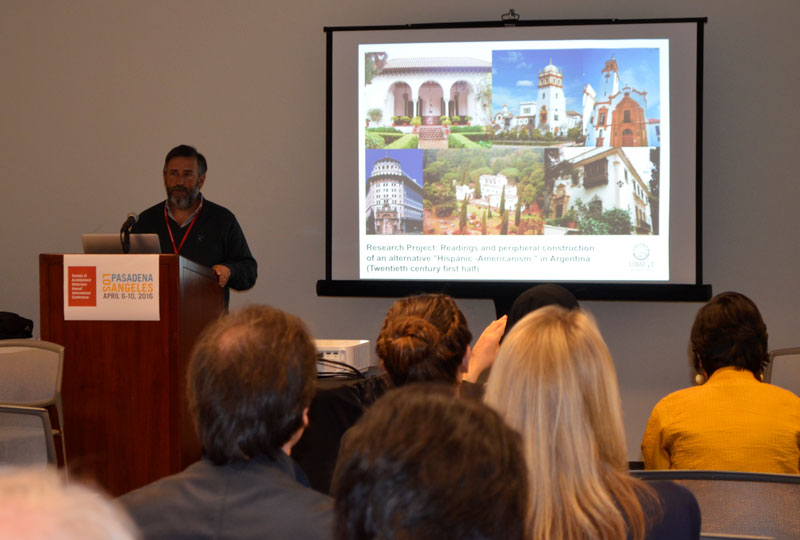
Annual Conference Fellowships
Conference fellowships support session chairs and speakers participating in the SAH Annual International Conference.


Detail.Card Simple
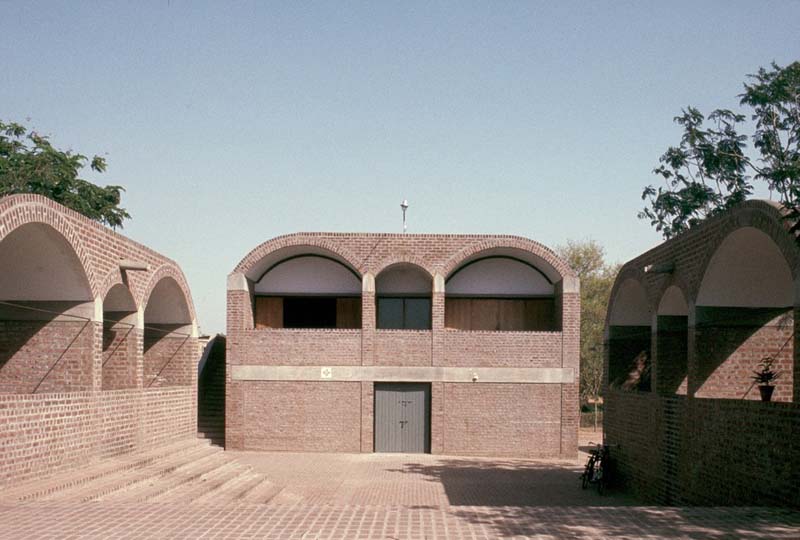
Another Card Title With Extra Text
This is a card summary. Has a limit of 255 characters. We can increase that if you think we need more text.
Detail.Card Hero


Content Types
Blogs
Blog List
Events
Events List
Call for Papers: TAD Journal Vol 9 Issue 2, Innovation
Add to:
Deadline: January 15, 2025
Submissions: https://mc.manuscriptcentral.com/tadjournal
The upcoming issue of TECHNOLOGY | ARCHITECTURE + DESIGN (TAD) welcomes submissions addressing new and original research on architecture, design, and technology. The journal now welcomes research or scholarship for the topic of this call for papers or open topics on a rolling submission basis. We will consider all submissions for this or an upcoming issue.
The focus area for this issue seeks to explore inventive topics from different aspects of the built environment. Innovation captures new ideas, methods, strategies, products, forms, designs, etc. Innovation is the action or process of innovating, introducing, or presenting novelties and modifying what is established by introducing new elements or forms. It is a change introduced to an existing product. Imaginative ideas include improvements that capture how components or processes are modified or configured in designs, systems, or domains, like building materials, data processing, digital fabrication, computation, history and theory of innovation. Innovation is critical to the success of any endeavor, such as an organization, enterprise, field or discipline, or industry. Invention is the primary driver of advancement in the built environment and other sectors, as it provides approaches, resources, and concepts generated and realized, leading to a better and more sustainable built environment. Invention guides all disciplines, and inventive ideas involve various players with diverse incentives.
The current issue seeks submissions that provide thoughtful and rigorous approaches to answer innovation-related questions and experiments. The issue seeks submissions that cover a broad range of topics in architecture. The journal seeks submissions that capture work on inventive renewable technologies and materials, innovations in sustainability, adaptive reuse, history and theories of innovation in the field, sustainable building strategies, systems, smart metering, sensing, monitoring, digital innovations, patents, advanced methods of data sharing, documentation, and interpretation of big data, application of digital twin and new technologies in the built environment to name a few.
Authors may address the following questions, but they can be broader than these areas. How do we approach and manage imaginative ideas? What is the notion of challenging or rethinking the concept of innovation in our discipline? When is it desirable? When can our actions or attitudes of privileging novelty over long-standing practices impact inventive ideas? What technological innovations save energy consumption in the built environment? How have innovations improved building performance, thermal comfort, satisfaction, and energy efficiency? What are the innovative strategies adopted to enhance various aspects of building performance? What are the historical trends of innovation witnessed in the built environment over the last decades? How has it influenced investigations on sustainable built environment, energy efficiency, low-carbon building envelopes, affordable housing, modeling and optimization, post-occupancy evaluation, field measurements, and environmental monitoring of indoor and outdoor thermal environments? How have regulations and policies shaped innovation? What strategies could industry, practice, and academia employ to foster and nurture innovation in the built environment? Are there any lessons we can learn from work on inventive studies? How do we see the future of innovation and its associated risks?
The editors strongly encourage submissions by individual or multiple authors with related work, including those demonstrating contributions from underrepresented groups in the field.
TAD invites original and innovative research from scholars, practitioners, researchers, and students. Contributions to the issue focus area are encouraged, but TAD will consider all papers that meet the TAD mission statement. The journal accepts submissions on a rolling basis, but for consideration in this issue, manuscripts are due before 11:59 pm Eastern Time on January 15, 2025. All manuscripts are double-blind peer-reviewed. Manuscripts must follow the standards detailed in the TAD Author Guide, available at TADjournal.org.
Events Home Blocks
Call for Papers: TAD Journal Vol 9 Issue 2, Innovation
Add to:
Deadline: January 15, 2025
Submissions: https://mc.manuscriptcentral.com/tadjournal
The upcoming issue of TECHNOLOGY | ARCHITECTURE + DESIGN (TAD) welcomes submissions addressing new and original research on architecture, design, and technology. The journal now welcomes research or scholarship for the topic of this call for papers or open topics on a rolling submission basis. We will consider all submissions for this or an upcoming issue.
The focus area for this issue seeks to explore inventive topics from different aspects of the built environment. Innovation captures new ideas, methods, strategies, products, forms, designs, etc. Innovation is the action or process of innovating, introducing, or presenting novelties and modifying what is established by introducing new elements or forms. It is a change introduced to an existing product. Imaginative ideas include improvements that capture how components or processes are modified or configured in designs, systems, or domains, like building materials, data processing, digital fabrication, computation, history and theory of innovation. Innovation is critical to the success of any endeavor, such as an organization, enterprise, field or discipline, or industry. Invention is the primary driver of advancement in the built environment and other sectors, as it provides approaches, resources, and concepts generated and realized, leading to a better and more sustainable built environment. Invention guides all disciplines, and inventive ideas involve various players with diverse incentives.
The current issue seeks submissions that provide thoughtful and rigorous approaches to answer innovation-related questions and experiments. The issue seeks submissions that cover a broad range of topics in architecture. The journal seeks submissions that capture work on inventive renewable technologies and materials, innovations in sustainability, adaptive reuse, history and theories of innovation in the field, sustainable building strategies, systems, smart metering, sensing, monitoring, digital innovations, patents, advanced methods of data sharing, documentation, and interpretation of big data, application of digital twin and new technologies in the built environment to name a few.
Authors may address the following questions, but they can be broader than these areas. How do we approach and manage imaginative ideas? What is the notion of challenging or rethinking the concept of innovation in our discipline? When is it desirable? When can our actions or attitudes of privileging novelty over long-standing practices impact inventive ideas? What technological innovations save energy consumption in the built environment? How have innovations improved building performance, thermal comfort, satisfaction, and energy efficiency? What are the innovative strategies adopted to enhance various aspects of building performance? What are the historical trends of innovation witnessed in the built environment over the last decades? How has it influenced investigations on sustainable built environment, energy efficiency, low-carbon building envelopes, affordable housing, modeling and optimization, post-occupancy evaluation, field measurements, and environmental monitoring of indoor and outdoor thermal environments? How have regulations and policies shaped innovation? What strategies could industry, practice, and academia employ to foster and nurture innovation in the built environment? Are there any lessons we can learn from work on inventive studies? How do we see the future of innovation and its associated risks?
The editors strongly encourage submissions by individual or multiple authors with related work, including those demonstrating contributions from underrepresented groups in the field.
TAD invites original and innovative research from scholars, practitioners, researchers, and students. Contributions to the issue focus area are encouraged, but TAD will consider all papers that meet the TAD mission statement. The journal accepts submissions on a rolling basis, but for consideration in this issue, manuscripts are due before 11:59 pm Eastern Time on January 15, 2025. All manuscripts are double-blind peer-reviewed. Manuscripts must follow the standards detailed in the TAD Author Guide, available at TADjournal.org.



